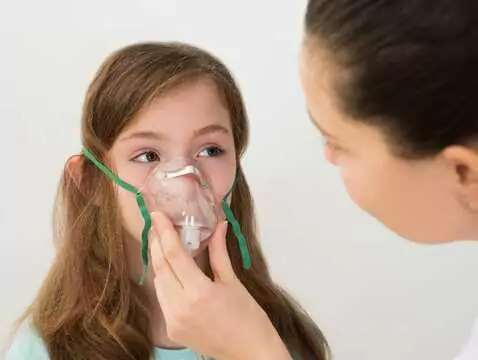
Allergy in a child - causes, symptoms, diagnosis, treatment
Allergy is a condition that is largely genetically determined. In particular, it concerns the so-called type I allergic reaction, associated with the production of specific IgE antibodies (atopy).

Urticaria - causes, symptoms, diagnosis, treatment
It is a syndrome in which pink or porcelain-white blisters appear on the skin surface with swelling and usually significant itching. The name comes from the fact that the skin lesions resemble the...

Selected heart defects in children - tetralogy of Fallot
The next in the series of articles presenting the most common heart defects in children discusses a complex congenital defect called tetralogy of Fallot. The typical clinical picture of the disease...

Acquired hypothyroidism - causes, symptoms, diagnosis, treatment
Hypothyroidism is a medical condition resulting from a decrease in the amount of secreted thyroid hormones that does not cover the body's need for these hormones. Acquired hypothyroidism is usually...

Helicobacter pylori - part 2: clinical picture, diagnosis and treatment
Second part of an article on Helicobacter pylori infection in children. The clinical picture of the infection and various methods of diagnosis of Helicobacter pylori are discussed. Current principles...

Pinworms - causes, symptoms, diagnosis, treatment
The human pinworm is a parasite of the large intestine and is only found in humans. The pinworm is easily transmitted by food or inhalation, through dirty hands, contaminated food or dust.

Roundworm - a worm that travels from the gut to the lungs - causes, symptoms, diagnosis, treatment
It is the most common gastrointestinal worm in the world. The human roundworm belongs to the group of roundworms. Humans become infected by accidentally ingesting water or food contaminated with...

Habitual constipation in children - causes, symptoms, diagnosis, treatment
Habitual constipation is defined as constipation resulting from repeated, deliberate refraining from passing stool (defecation). It is one of the most common mechanisms for the development of...

Stool constipation in an infant - causes, symptoms, diagnosis, treatment
Constipation is a problem typically experienced by older children, but can sometimes start as early as infancy.

Helicobacter pylori - part 1: epidemiology and pathomechanisms of infection
An article devoted to one of the most important problems of daily practice - Helicobacter pylori infection. The first part of the paper discusses the epidemiology and pathomechanisms of the infection...

Decreased platelet levels - causes, symptoms, diagnosis, treatment
Thrombocytes (platelets) are cells involved in the regulation of blood clotting. They also play an important role in the storage and transport of some important biological substances such as...

Leukocytosis - causes, symptoms, diagnosis, treatment
Leukocytosis is defined as an increase in the level of white blood cells (leukocytes, white blood cells- WBC) in a peripheral blood count test.

The common cold in pregnancy - causes, symptoms, diagnosis, treatment
A feeling of general weakness accompanied by symptoms of an incipient upper respiratory tract infection.

Scarlet fever (scarlet fever) - causes, symptoms, diagnosis, treatment
This is an infectious disease caused by group A beta-haemolytic streptococci. The bacteria produce exotoxins, with erythrogenic toxin being responsible for the onset of skin symptoms. The incubation...

Urination during pregnancy - what to do?
Increased vaginal discharge occurring during pregnancy.

Vaccination after an infection
Acute upper respiratory tract infection is one of the most common reasons for deferring childhood immunisation.

Congenital toxoplasmosis - causes, symptoms, diagnosis, treatment
Toxoplasmosis is a zoonotic disease caused by infection with the protozoan Toxoplasma gondii. Infection is most often by the oral route, through the consumption of food contaminated with Toxoplasma...

Wandering testes - causes, symptoms, diagnosis, treatment
Wandering testes are a form of cryptorchidism where the testicle is uterine and located in the scrotum, but tends to (sometimes completely) retract into the inguinal canal.

Zanoccosis - causes, symptoms, diagnosis, treatment
Zanoccosis (Latin name paronychia) is a purulent inflammation of the nail shaft of the fingers.

Finger pus - causes, symptoms, diagnosis, treatment
A pus infection (Latin name: panaritium) is a purulent infection taking place on the palmar surface of the fingers. The cause is most often staphylococcus.




